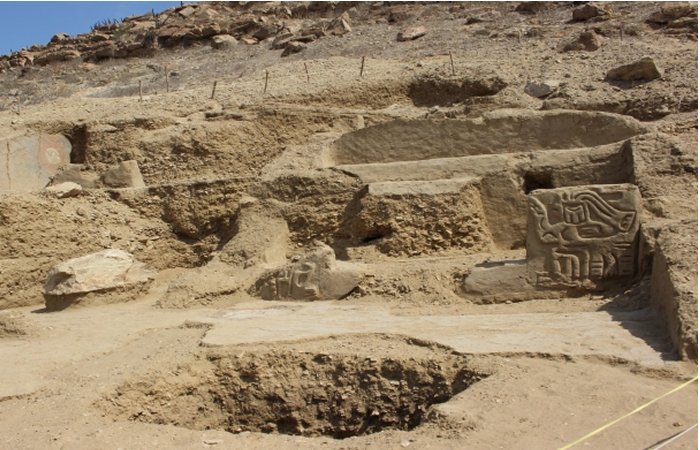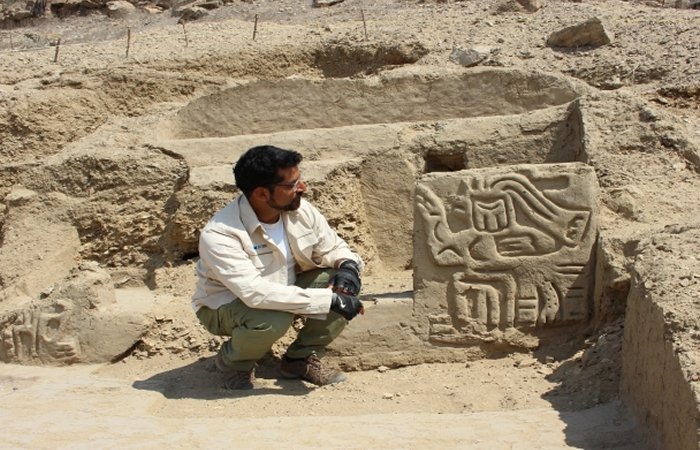Conny Waters – MessageToEagle.com – The recent archaeological discovery in Peru has shed new light on the region’s ancient history. Before the Spanish conquest, the Inca civilization was renowned for its expansive influence and sophisticated architectural achievements throughout the Andean region. However, this new finding reveals that complex building practices in the area predate the Inca by several millennia.
Credit: Ministry of Culture
Peru’s Ministry of Culture has officially announced unearthing a pre-Inca temple at the Los Paredones de la Otra Banda – Las Ánimas Archaeological Complex near Chiclayo. This discovery was made during excavations at two archaeological units within the site, where researchers uncovered the first evidence of monumental religious architecture dating back to the formative period.
According to archaeologists, the temple’s walls are approximately 5,000 years old. These ancient structures were constructed using smashed mud, demonstrating the advanced building methods employed by early civilizations in the region.
The archaeological findings at the religious site reveal several significant features. The central element is a staircase that ascends to a stage or platform, likely as a focal point for rituals. Discovering an anthropomorphized carving that combines elements from different species is particularly interesting. This unique artifact portrays a figure with a human body, the head of a bird, feline characteristics, and claws resembling those of a reptile. Based on these findings, researchers have concluded that this space was likely utilized for conducting special ceremonies. Adding to the site’s historical value, archaeologists uncovered a color painting that remains intact on one of the temple walls, providing insight into the artistic practices of the time.
Credit: Ministry of Culture
“We are likely looking at a five-thousand-year-old religious complex, an architectural space defined by mud-built walls. We have what would have been a central staircase from which one would ascend to a kind of stage in the central part,” said Dr. Luis Armando Muro Ynoñán, the director of the Archaeological Project of Cultural Landscapes of Úcupe – Zaña Valley in a press release.
In the second archaeological excavation unit, researchers uncovered significant findings from the late Moche period, approximately 600 to 700 AD. The discoveries include ceremonial architecture featuring buttresses and the foundations of a substantial stepped platform. This architectural evidence provides valuable insights into the religious or cultural practices of the Moche civilization during this time frame.
See also: More Archaeology News
Additionally, the excavation revealed the burial of a young child, estimated to be between 5 and 6 years old. This burial dates from a later period than the ceremonial architecture, indicating continued use or reuse of the site.
These findings contribute to our understanding of the area’s historical timeline and the evolution of cultural practices in ancient Peru. The combination of architectural remains and human burial provides a multifaceted view of the site’s significance and usage over different periods.
Written by Conny Waters – MessageToEagle.com – AncientPages.com Staff Writer








